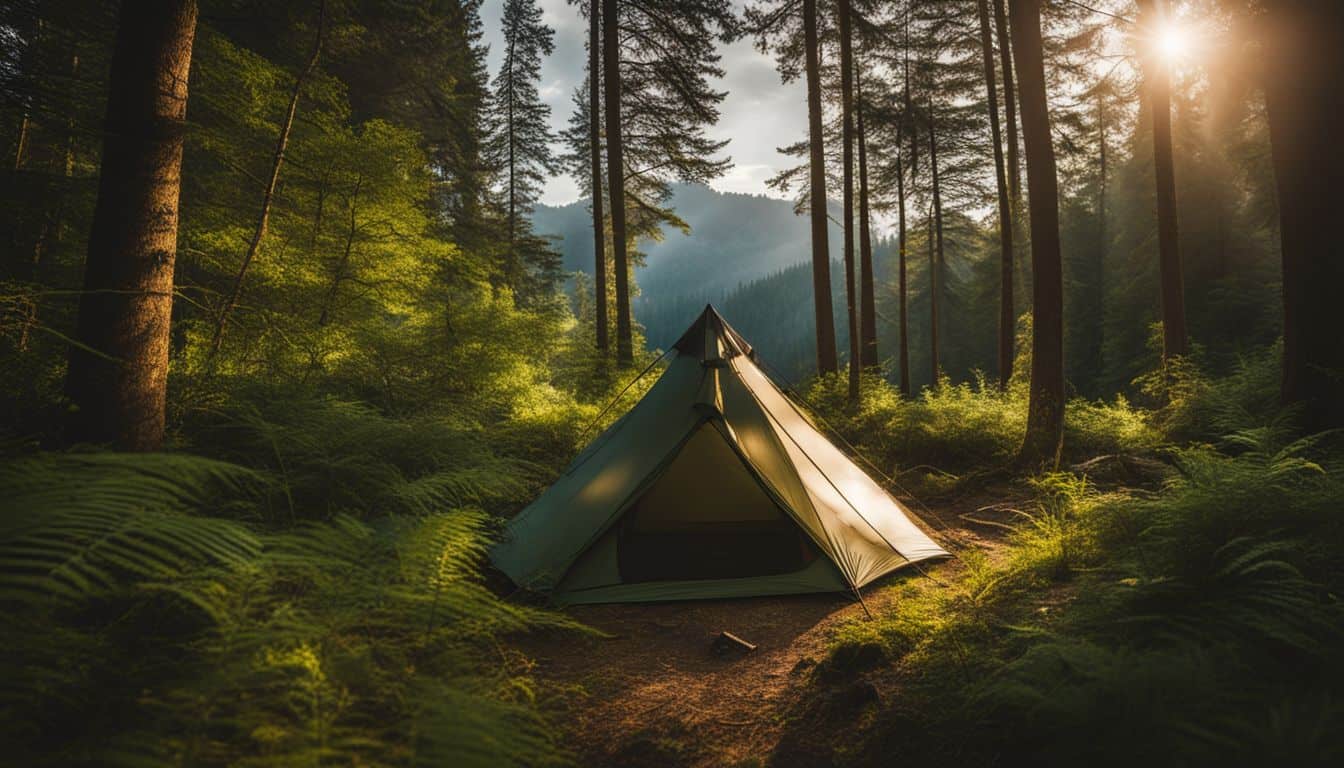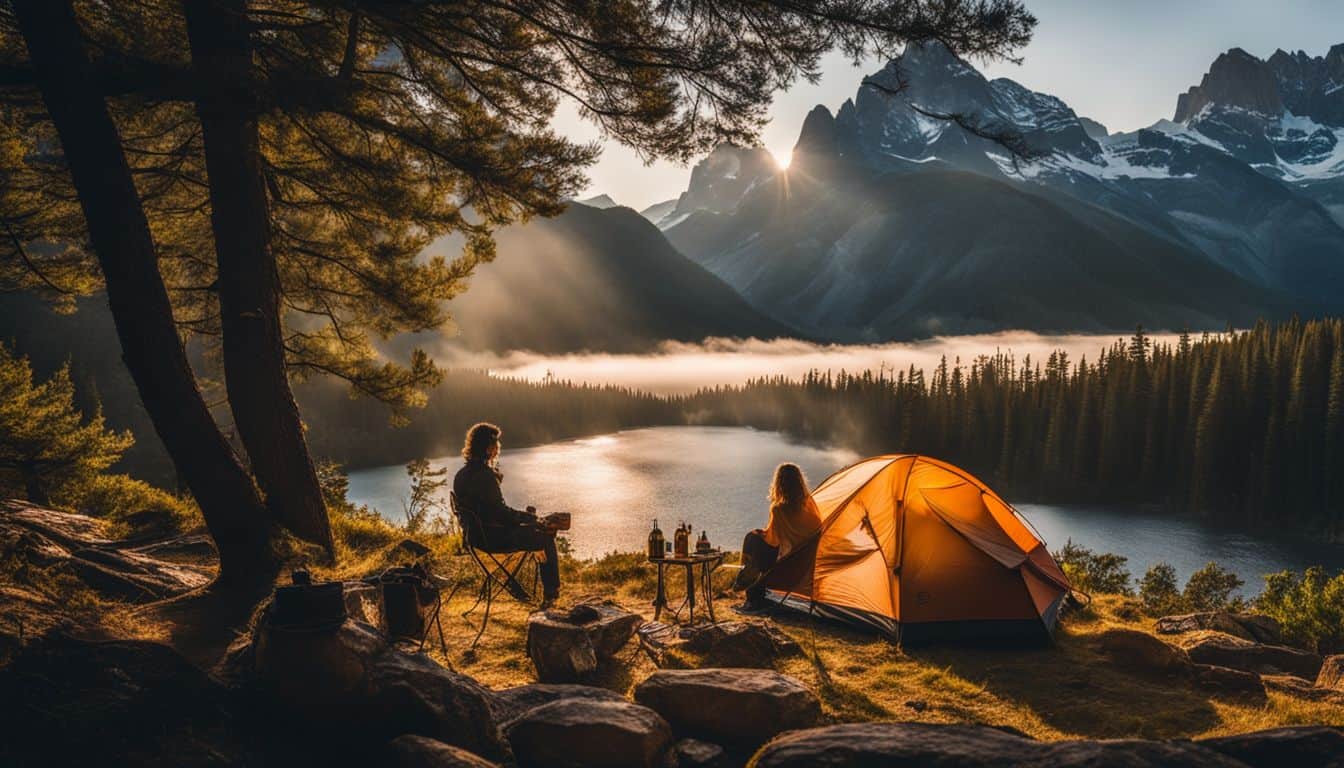Essential Guide to Dispersed Camping Regulations
Dispersed camping offers a unique way to experience nature, but it comes with specific rules and responsibilities. This guide will help you navigate the regulations for dispersed camping, particularly in National Forests.
What is Dispersed Camping?
Dispersed camping refers to camping outside of designated campgrounds, typically on public lands managed by agencies like the U.S. Forest Service or Bureau of Land Management (BLM). It’s generally free but requires campers to be self-sufficient and follow Leave No Trace principles. This form of camping offers a more primitive and immersive outdoor experience, allowing campers to truly connect with nature away from developed facilities.
However, it also comes with greater responsibility. Dispersed campers must be prepared to provide for all their own needs, including water, waste disposal, and navigation. They must also be vigilant about minimizing their impact on the environment, as these areas often lack the infrastructure to manage the human impact that developed campgrounds have.

General Regulations
- Camping Duration: Most National Forests limit dispersed camping to 14 days within a 30-day period. This regulation helps prevent long-term occupancy and allows fair access for all users. After 14 days, campers must move to a new site at least 5 miles away.
- Site Selection:
- Camp at least 100-200 feet away from any water source. This protects water quality and wildlife habitats.
- Choose sites at least 100 feet from the base of any cliff or back of any rock shelter. This is for your safety and to preserve archaeological sites.
- Use existing campsites when possible to minimize impact. This concentrates use and prevents the creation of new, disturbed areas.
- Leave No Trace: Pack out all trash and leave the site cleaner than you found it. This principle extends beyond just litter – it includes being mindful of vegetation, wildlife, and other campers. For more information on responsible camping practices, check out our guide on dispersed camping etiquette.
- Fire Regulations:
- Check local fire restrictions before starting any fire. Restrictions can change rapidly based on conditions.
- Use existing fire rings when available to minimize new impact.
- Fully extinguish all fires before leaving. Douse with water, stir, and repeat until cold to the touch.
- Wildlife and Food Storage:
- Store food properly to avoid attracting wildlife. This protects both animals and campers.
- In bear country, use bear-resistant containers or proper food hanging techniques. This is often a legal requirement, not just a suggestion.
- Sanitation:
- Dispose of human waste properly, using catholes dug 6-8 inches deep and at least 200 feet from water sources. This promotes decomposition and prevents water contamination.
- Pack out toilet paper and hygiene products. These items do not decompose quickly and can attract wildlife.
- Vehicle Use:
- Park in areas that don’t damage vegetation. Look for durable surfaces like gravel or bare ground.
- Stay on designated roads and trails. Off-road driving can cause significant environmental damage.
These regulations are designed to protect the natural environment, ensure fair access for all users, and maintain the wilderness character of dispersed camping areas. By following these rules, campers help preserve these areas for future generations to enjoy.
Specific National Forest Regulations
Regulations can vary between different National Forests. For example:
- Some forests may have specific area closures or restrictions. These can be due to wildlife protection, fire danger, or environmental restoration efforts.
- Certain forests might require permits for dispersed camping. This helps manage visitor numbers and protect sensitive areas.
- There may be seasonal restrictions in some areas. For instance, some high-elevation areas might be closed in winter for safety reasons.
Each National Forest has its unique ecosystem and management challenges, which is reflected in its specific regulations. It’s crucial to research the particular rules for the forest you plan to visit, as violating these regulations can result in fines or even criminal charges. Additionally, understanding these rules helps you become a more responsible and informed camper, contributing to the preservation of these natural areas.
For information on camping in different seasons, visit our guide on seasonal dispersed camping.
Before You Go
- Research: Always check the specific regulations for the area you plan to visit. This includes fire restrictions, camping limits, and any special rules for the area.
- Contact Local Rangers: Reach out to the local ranger station for the most up-to-date information on conditions and restrictions. Rangers can provide valuable insights about current trail conditions, wildlife activity, and any recent changes to regulations.
- Prepare Properly: Bring appropriate gear, including water treatment methods, waste disposal bags, and bear-resistant containers if necessary. For a comprehensive list of essential items, check out our article on gear for dispersed camping.
- Check Road Conditions: Ensure your vehicle is suitable for the terrain and road conditions. Many dispersed camping areas are accessed via unpaved roads that may be challenging for standard vehicles.
Proper preparation is key to a safe and enjoyable dispersed camping experience. By doing thorough research and preparation, you can avoid potential issues and focus on enjoying your time in nature. Remember, in dispersed camping areas, you are responsible for your own safety and comfort, so being well-prepared is crucial.
Safety Considerations
- Emergency Preparedness: Bring a first aid kit and know basic wilderness first aid. Consider taking a wilderness first aid course before your trip.
- Communication: Have a plan for emergency communication, as cell service may be limited. Consider bringing a satellite communicator or personal locator beacon for remote areas.
- Weather Awareness: Check weather forecasts and be prepared for sudden changes. Mountain weather can be particularly unpredictable, so pack clothing for various conditions.
- Water Safety: Always treat water before drinking. Learn more about finding water while dispersed camping.
Safety should always be your top priority when dispersed camping. Unlike developed campgrounds, you may be far from help if an emergency occurs. Being prepared for various scenarios, from minor injuries to severe weather, can make the difference between a challenging situation and a life-threatening one. Always let someone know your plans before you go, including when you expect to return. This information can be crucial if a search and rescue operation becomes necessary.

Conclusion
Remember, dispersed camping regulations are designed to protect both the environment and campers. By following these rules, you help preserve these areas for future generations while enjoying a unique outdoor experience. Always practice responsible camping and respect the natural environment.

Leave a Reply